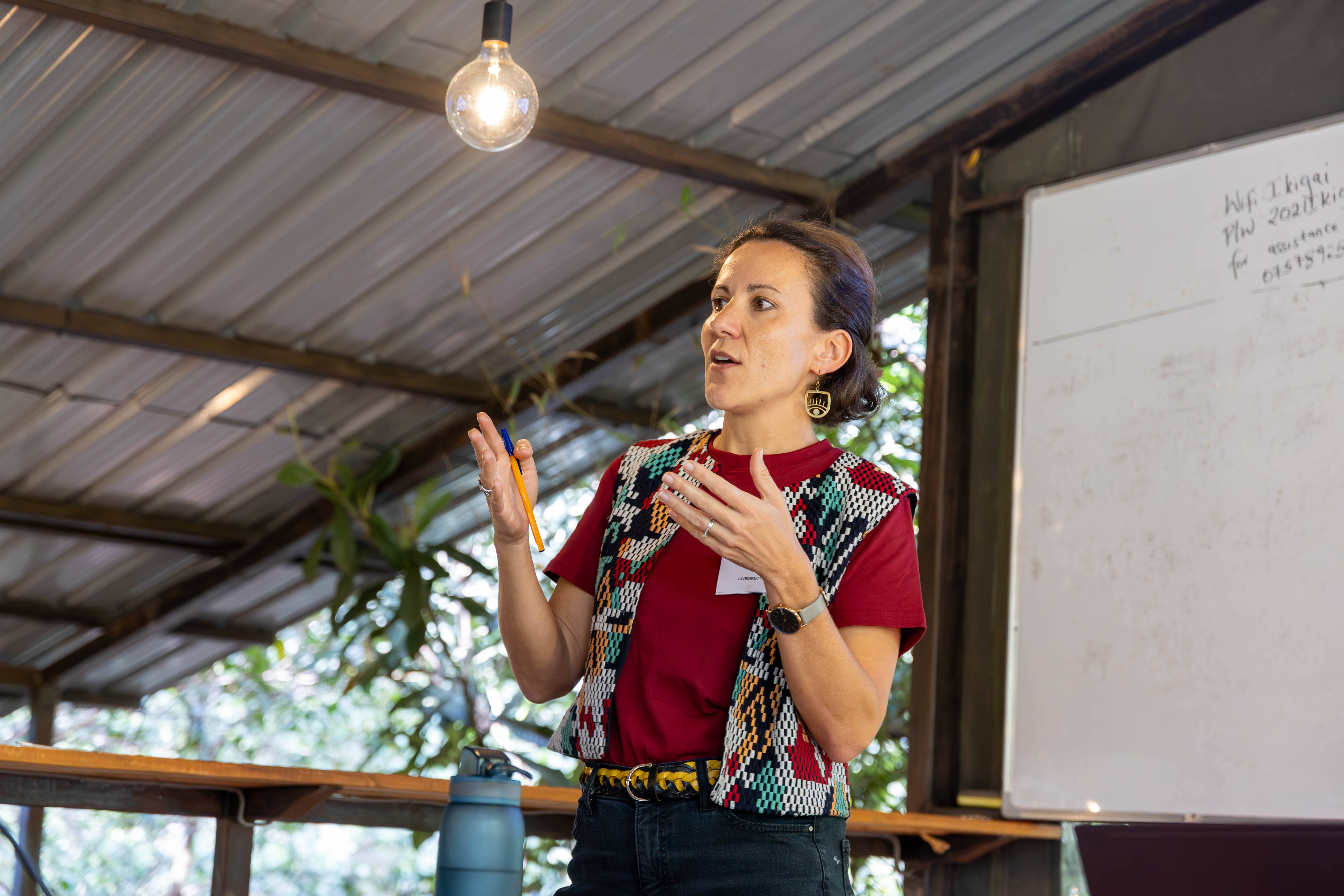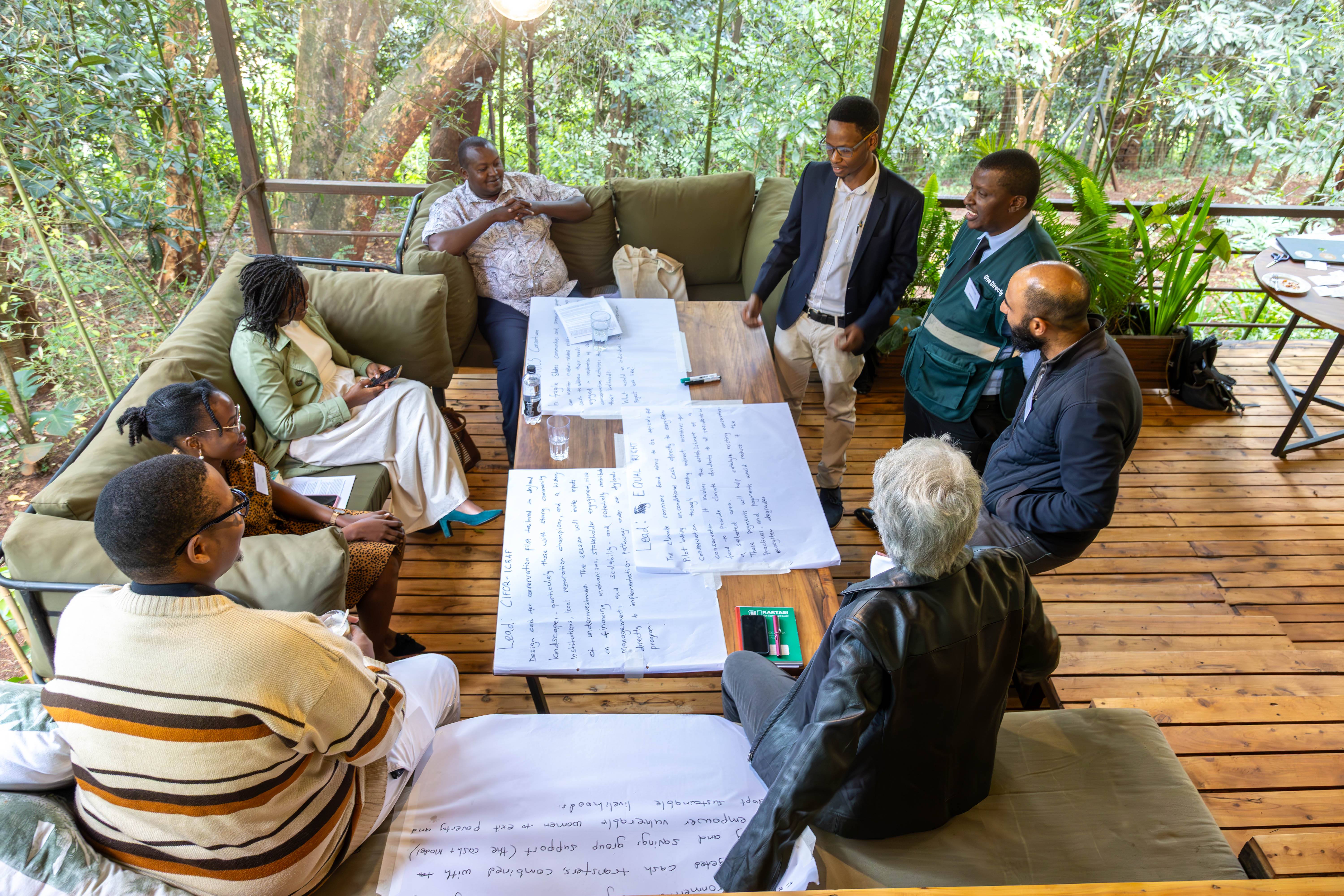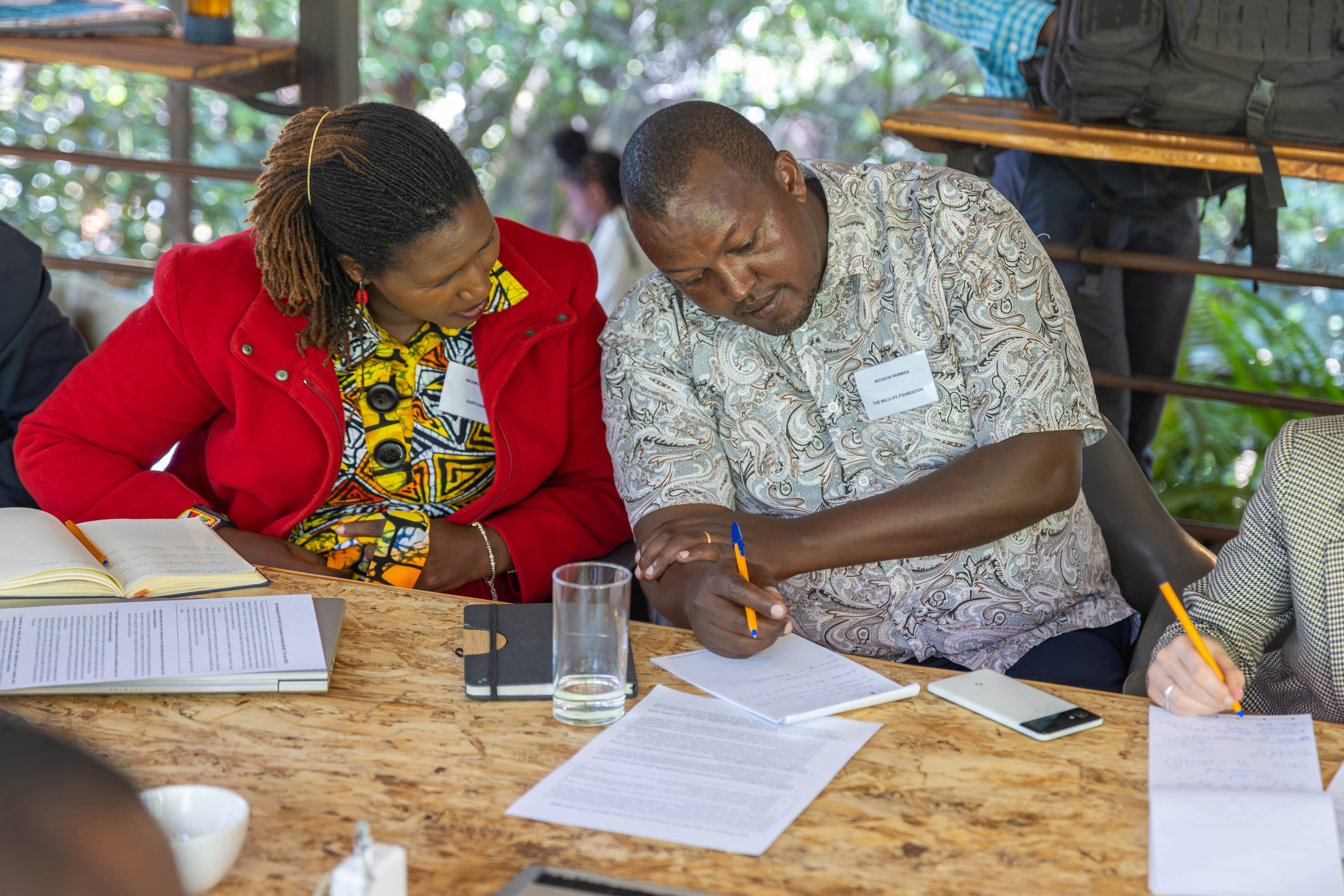- Cash can support conservation when designed with communities, not for them.
- At our June workshop in Nairobi, five new pilots proposed ways to fund both people and ecosystems.
- Trust emerged as the core throughline: when individuals have direct access to finance, many choose to protect nature.
Conservation finance is failing and local communities are still shut out
On June 11, more than 50 practitioners gathered in Nairobi to explore a bold question: What if we tackled conservation not by restricting communities but by trusting them?
Co-hosted by Equal Right, GiveDirectly, and the Global Resilience Partnership, the “Cash for Conservation” workshop brought together voices from across East Africa: conservationists, cash practitioners, researchers, funders, and frontline communities. Over the course of the day, participants debated how direct cash transfers could help protect both people and the planet.
The urgency is clear. Globally, there’s a $700B+ annual funding gap in sustainable land and seascape management. Traditional conservation models still lean on donor conditions, restrictive land use, or narrow metrics, while poverty and environmental degradation reinforce each other.
There’s an alternative: give communities the resources and trust to lead conservation from the ground up.
Five proposed cash-based pilots show new ways to fund both people and nature
At the heart of the workshop was a “dragons’ den” pitch session, where five real pilots were pitched to funders and conservation experts:
1️⃣ 100 Weeks: Karamoja Cash+ for Women & Nature (Uganda)
In Uganda’s Karamoja region, where poverty is high and environmental stress severe, 100 Weeks proposed a “cash-plus” model: €8/week for 100 weeks to 200 women, paired with savings support and training. The aim: support women to move from extractive livelihoods to beekeeping, agroforestry, and ecotourism.
“Financial stability gives women the power to choose sustainable livelihoods.” – Anna Theuvenet Ssuna
2️⃣ Equal Right: Climate Commons Fund (Laikipia, Kenya)
This concept offers “climate dividends”: unconditional cash transfers indexed to ecological indicators like tree cover or soil carbon. Managed collectively, the fund aims to build a regenerative, rather than extractive, conservation economy.
“It’s about equity, not extraction.” – George Matu, Equal Right
3️⃣ NRC: Cash-for-Conservation in Fragile States (Somalia)
In the drylands along the Kenya–Somalia border, NRC and the BRICS Consortium proposed combining group cash transfers with ecosystem restoration, such as soil bunds and grazing enclosures. Communities would lead the work and monitor environmental risk, building toward blended finance for long-term resilience.
4️⃣ CIFOR-ICRAF: Cash+ for Dryland Restoration (Kenya)
This model ties stipends to land restoration activities, like water-smart agriculture and farmer-managed regeneration. Outcomes would be tracked via drones and community monitoring, with the aim of integrating results into national reporting systems.
5️⃣ CAVEX: Cash Trials for Regenerative Agriculture (Kenya)
CAVEX aims to test whether cash – tied to regenerative farming behaviors like intercropping and low-till cultivation – can deliver measurable ecological outcomes. Farmers would receive either conditional or unconditional cash; remote sensing would track the impact.
The key lesson: cash works when trust and local design come first
Across panels and pitches, five takeaways stood out:
- Cash can support conservation if designed intentionally
In Kilifi, Kenya, large transfers helped households shift away from tree-cutting towards sustainable income from farming and entrepreneurship. But success depends on design – cash timing and cadence, behavior nudges and community governance all matter. - Conditionality isn’t the problem, rigidity is
In some contexts, cash may need performance-based conditions. But redistribution doesn’t always require rigid enforcement. Local governance, trust, and clear intent matter more than checklists. - Private finance is open but wants a bridge
There’s plenty of capital available for nature-based solutions, but project leads need to speak the language of returns, risk, and scale. Models like climate dividends and blended finance could help unlock investment. - Evidence gaps remain, especially on biodiversity
There’s strong data on cash’s impacts on income and food security, but far less on ecological outcomes. A new Randomized Control Trial by 100 Weeks in Rwanda will directly compare conditional vs. unconditional transfers and measure biodiversity impacts. - We still underestimate communities’ desire to protect nature
Throughout the day, community leaders and field partners pushed back on the idea that conservation requires restriction. With options and income, people often choose restoration over extraction.
Field pilots, new networks, and a conservation investor forum are next
This was not a one-day event. Here’s what’s underway now:
- Each pilot team is refining their model and matching with funding partners.
- A high-level and detailed workshop summary has been circulated to all participants.
- A new “Cash for Conservation” Working Group (co-founded by GiveDirectly, Equal Right, and Cool Earth) is open to partners interested in research, programming and advocacy.
- Regional coordination is underway in East Africa, with plans for an investor forum in late 2025.
Conservation isn’t just about protecting wildlife or counting trees. It’s about enabling people to thrive with nature not in spite of it.
We’ve already seen what happens when we give people cash and trust them to choose. They invest in health, education, food, and livelihoods. What if we trusted them to do the same for their forests, rivers, and grazing lands?If you believe in that vision, join us.
Watch highlights of the event below:


